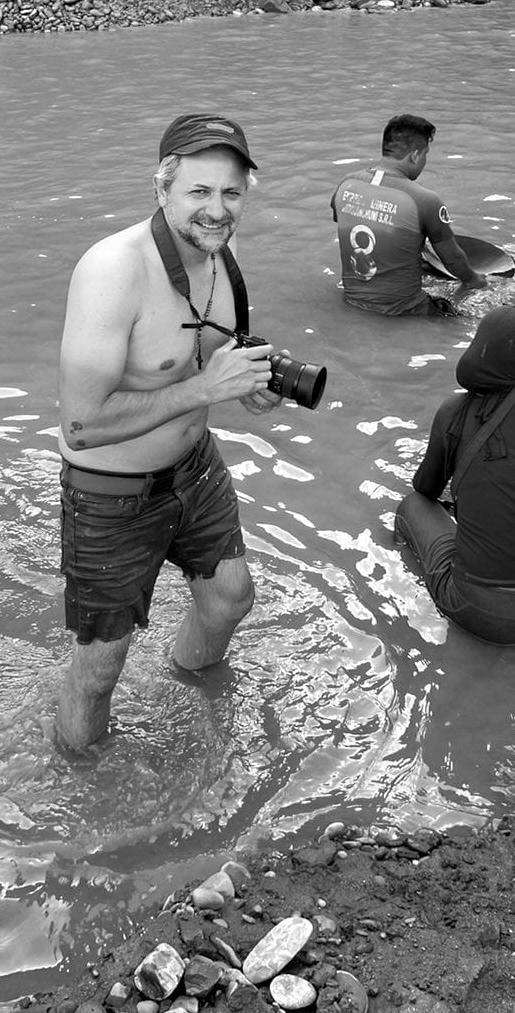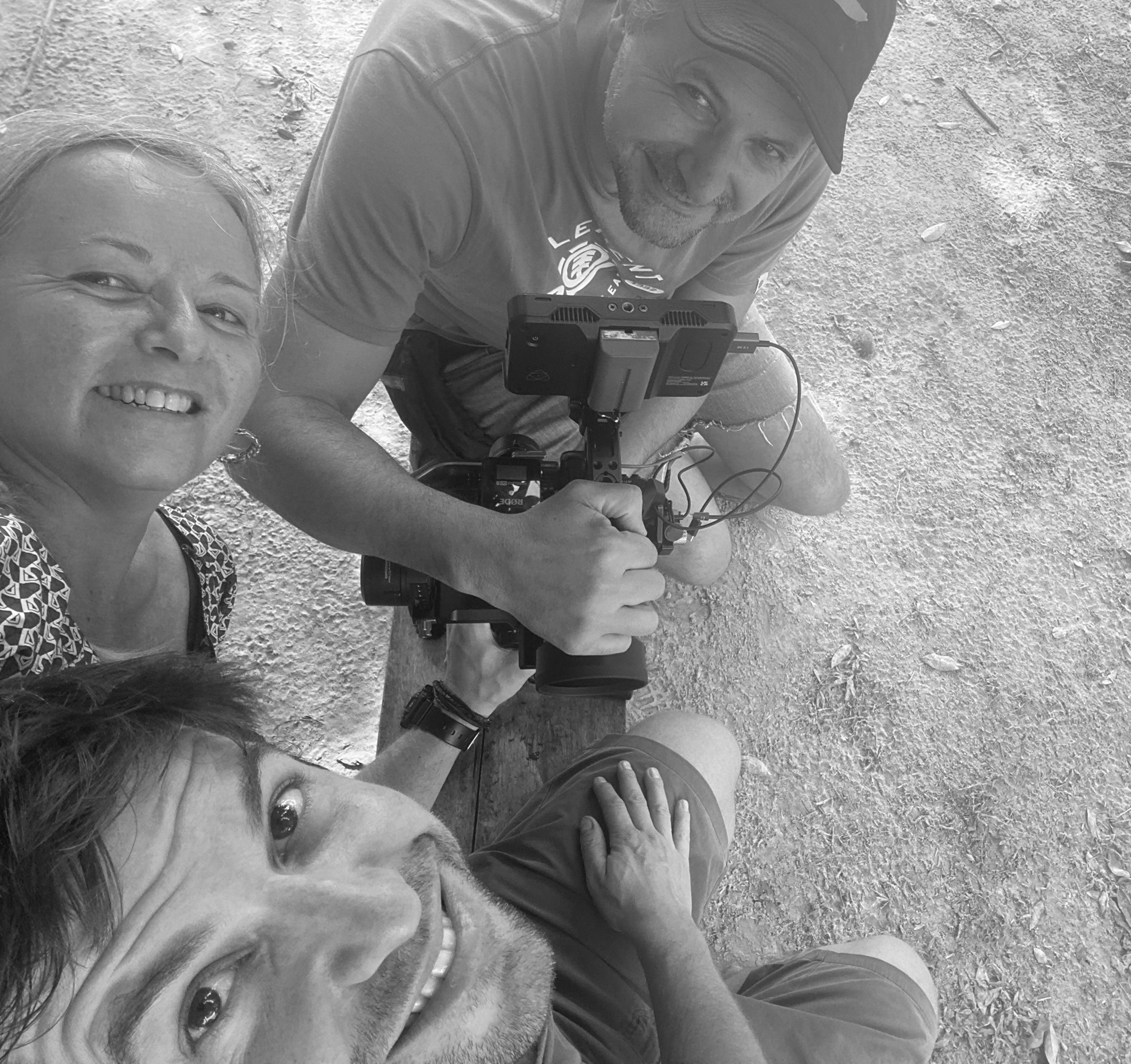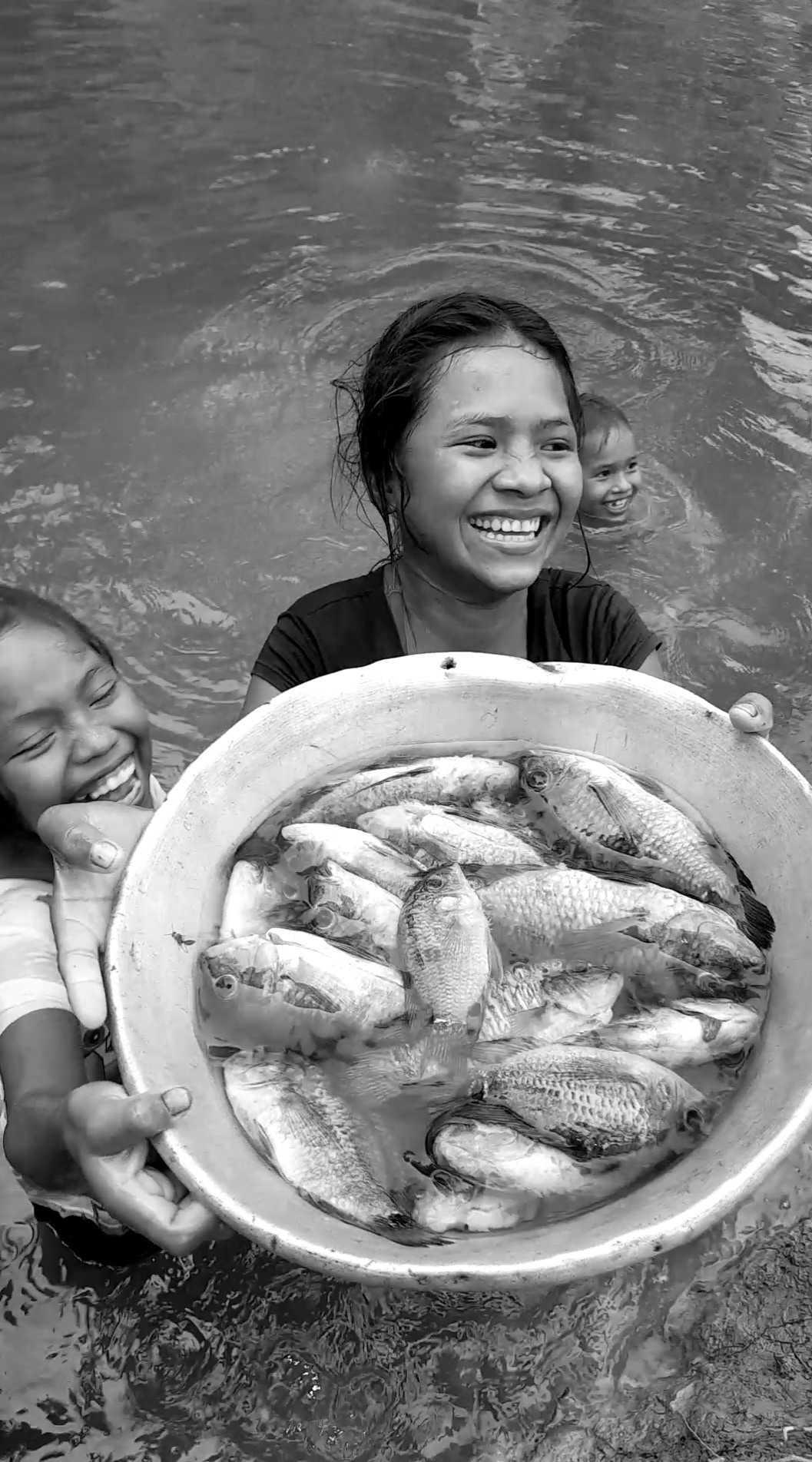with worn-out wheels that know the red dirt road too well. The wall of flames rises,
imposing, over five meters high and several kilometers long, consuming the Bolivian
Amazon rainforest as is common nowadays. On the playlist, a song speaks of the
"South Caribbean," evoking peaceful, timeless beaches—a cruel irony as we glide
through that green inferno.
A watermelon in the trunk is the perfect excuse to stop near a stream and cease our
flight. As we get out, the distant laughter of children can be heard. Adults fish and clean
their catch on a rock while the little ones plunge into the water. It’s an oasis seemingly
unreachable by the flames we’re escaping. Oblivious to the danger, they laugh,
unaware of the fire, just as they are unaware of the hidden mercury in the fish they’ll eat
for dinner in the village. Mercury that silently kills them. It would be unfair to speak of
this to the children. Instead, we share the watermelon with them.
Aerial image of gold mining in the Mapiri region, north of La Paz, in the Amazon.
Balbina Sossa, from the Esse Ejja community, knows that the fish her grandchildren bring from the river contain mercury, but she still cooks them to ease the children's hunger.
Inhabitants of the Teoponte region in the Bolivian Amazon gather to search for some gold during the brief period when mining companies rotate shifts. They are merely the scraps left over from the great golden feast.
The Mosetén people, traditionally dedicated to fishing, now face a devastating reality: the very way of life that once provided their sustenance is slowly poisoning them.
Milton Gamez Moreno, once a fisherman, has seen his hands, which once cast nets, now rest on the strings of his guitar, as mercury has robbed him of the freedom to move. His body carries a burden of 10.0 ppm of mercury, a clear sign of the contamination affecting the Ese Ejja community in Eyiyoquibo.
A capuchin monkey, tied at the entrance of a house, looks on with eyes that blend curiosity and resignation. Three children from the Esse Ejja community watch its every move with quiet attention. For them, the monkey is more than a fleeting companion: it embodies a regional culinary tradition and serves as a vital source of food in times of scarcity. In a place shaped by constant struggle, its fate seems already sealed.
Leaders of the Esse Ejja community in Eyiyoquibo rest on a boat stranded on the riverbank. On their torsos, they bear the marked levels of mercury in their blood. Standing before them, a group of children watches silently, as if seeing in them the reflection of a fate that looms over their own future.
Balbina Sossa cooks a few fish alongside her grandchildren, as the youngest watch her with expectant eyes. In that moment, the urgency to survive overshadows the invisible threat.
Shasta, Balbina’s granddaughter and a young girl from the Esse Ejja community in Eyiyoquibo, carries a bunch of bananas to the nearby town to sell them—seeking a way to survive and support her younger siblings during these difficult times.
Ruth Alipaz, leader of the National Coordinator for the Defense of Indigenous Territories, reflects in a boat on a dry river. With 5.5 ppm of mercury in her body, this poison marks her health and fuels her determination.
Yolanda Chita Vies, a member of the Mosetén community in Asunción del Quiquibey, has 4.3 ppm of mercury in her body, according to the latest analyses conducted by Cedib. However, she still does not fully understand what this result means for her health and the future of her community.
Ermindo Vies Gutiérrez lives in the community of Asunción del Quiquibey, and it is not the 9.7 ppm of mercury in his blood that worries him most, but the health of his daughter, who is also being affected by this poison that large companies dump into the river.
A woman refreshes her companion during the grueling hours of gold searching in one of the countless pits now scarring the Amazonian river landscapes near Mapiri. The oppressive heat leaves no time for rest; every minute is as valuable as gold.
In a frantic race, the people of Barranquilla rush to find the best spots in the pits that large mining companies have dug for gold extraction. They only have one hour before the shift change to try to grab some grams of the precious metal.
After an hour, the machines return to action, forcing the local residents out of the mining pit.
Some risk their lives diving into these dangerous practices, hoping to find a small golden vein.
At the edge of a cocoa plantation, a man who once worked as a cocoa harvester now waits by the ravine, watching for the moment when the machines stop so he can try his luck and extract some gold.
To Alex for hosting us at his parents' house and to his beautiful family.


